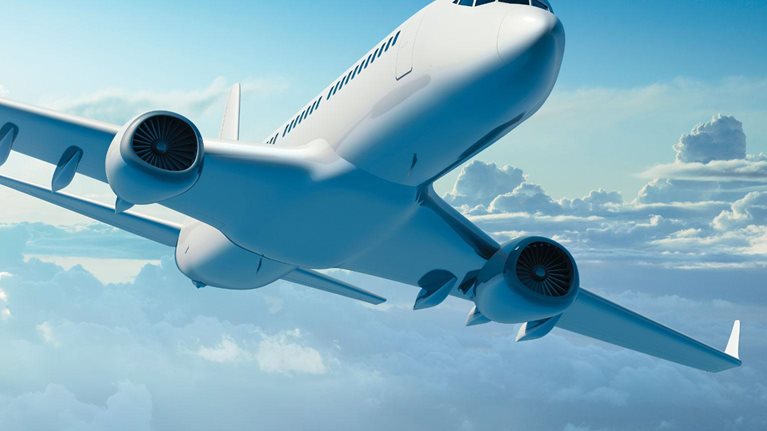Even as they expand their operations, many major airports around the world are operating at or beyond capacity. Jakarta’s Soekarno–Hatta International Airport, which was designed to accommodate 22 million passengers a year, handled more than 52 million in 2013; in 2014, Guangzhou Baiyun International Airport in Guangzhou, China, operated at nearly 20 percent above capacity. Other major airports—in cities such as São Paolo and Hong Kong—come close to saturation during peak travel periods and show no signs of slowing down.
Most airline executives know that congestion is a growing trend and have a general sense of what to expect when a hub or home airport begins approaching maximum capacity. For instance, they might rightly suspect that on-time performance drops as airports become constrained. And they may have a hunch that aircraft become harder to schedule and utilize. But beyond executives’ intuition and anecdotal experience, there is little information that can help airlines understand the impact of an airport becoming constrained, or how they should respond. Most important, there is little consensus around an essential question: Is a congested hub airport good or bad for home airlines?
To begin to answer these questions, we looked closely at trends from some of the world’s most constrained airports: Beijing Capital International Airport, Haneda Airport in Tokyo, and London Heathrow Airport.1 We reviewed both runway and terminal capacity, where data were available. We then analyzed the ways in which passenger numbers, aircraft types, ticket prices, and flight routes have shifted at those airports over time, and compared those shifts with the patterns seen at similarly large but unconstrained airports throughout the world. We identified five trends—some of which are straightforward and intuitive, and others that are more complex—that can help airlines better understand what happens as airports begin to approach maximum capacity and in turn plan their response.
Five trends at congested airports
Passenger growth flattens and the city loses overall
Our first finding won’t necessarily come as a surprise; as airports approach maximum capacity, passenger growth stalls. The number of passengers traveling through Heathrow has grown at less than 1 percent on average per year since 2000; during that same period, London’s other airports grew at nearly twice that rate. More surprising is the way in which Heathrow’s limitations affected neighboring airports. GDP—which is closely correlated with airline-traffic growth—indicates that Heathrow should have handled nearly 15 million more passengers than it did in 2013. It would be logical to assume those passengers, squeezed out of Heathrow, would have simply turned to nearby airports. But London’s other airports captured only about half of Heathrow’s overflow2 (Exhibit 1). In short, Heathrow’s constraints hurt the city of London more broadly. But London’s loss is continental Europe’s gain: hubs like Frankfurt and Amsterdam picked up some of the business travelers who would have otherwise flown via Heathrow. Research suggests the impact of congestion goes even further. In a 2013 report, the UK Airports Commission suggested that failing to alleviate capacity constraints at the nation’s airports could cost users and providers of airport infrastructure up to £20 billion over the next 60 years, and that costs to the economy more broadly could reach £45 billion. The group’s 2015 report suggests that costs to the broader economy could be even higher.3

As is the case at Heathrow, growth is falling short of predictions at other constrained airports, too. At Beijing Capital International Airport, where both runway and terminal handling capacity were maxed out in 2012, growth was just 2.5 percent a year from 2012 to 2014, significantly lower than the 7.9 percent that would have been expected based on GDP.4 And the spillover effect we identified in London is happening elsewhere too; every day, more than 80 shuttle buses carry passengers between Hong Kong and the less congested Shenzhen airport in mainland China.

Would you like to learn more about our Travel, Logistics & Transport Infrastructure Practice?
Aircraft get bigger
As airports get busier, there is a gradual but noticeable shift toward wide-body aircraft. Such “upgauging” is to be expected—larger planes can carry more passengers more efficiently. As congestion increases, many airlines start using bigger planes on short-haul flights.5 In 2002, nearly half of short-haul seat capacity at Beijing Capital International Airport was carried on wide-body aircraft. Wide-body usage fell significantly through 2010, as demand picked up for travel to secondary Chinese cities. But by 2012, a year after the airport became saturated, a new trend began. Wide-body use rose again as carriers were forced to upgauge in order to handle the increased volume (Exhibit 2). This trend holds in other constrained airports as well. At Tokyo Haneda airport, 67 percent of short-haul seat capacity is carried on wide-body aircraft. Tokyo is an especially pronounced example of this trend, but other constrained airports are also seeing gradual upgauging.

Network connectivity decreases
Evidence suggests that as an airport gets more constrained, airlines drop connection-heavy routes in favor of routes with high point-to-point demand, which are more profitable. Airlines operating out of congested airports tend to increase the frequency of flights on existing routes, rather than offer new destinations. Between 2002 and 2014, many large, unconstrained airports in and around Europe expanded their networks; Charles de Gaulle Airport in Paris added approximately 30 new cities to its short-haul destination list during this time, and Istanbul Ataturk Airport added more than 60. Airlines at Heathrow, however, actually reduced the number of short-haul destinations they serve but increased the frequency of flights to those cities. In short, as airports get busier, they offer more flights to fewer cities; unconstrained airports serve more cities, less frequently. This pattern is similar for longer flights.
Ticket prices rise
Seats on direct flights to and from congested airports are at a premium. Demand outstrips supply, which means airlines sometimes increase prices to focus on premium traffic. British Airways, which operates the vast majority of its flights into and out of Heathrow,6 increased revenue per available seat kilometer (RASK) by roughly 4 percent per year from 2005 to 2013; RASK growth for most European airlines was relatively flat during that same period. In 2012, the average price of a direct flight to or from Heathrow was more than three times that of nearby Gatwick. Factors such as Heathrow’s high proportion of long-haul destinations and business-class customers play a part in higher prices. But even controlling for these factors, the fare premium remains intact; for flights into Heathrow, that premium can be up to 80 percent higher.
Slot trading becomes more important (and more profitable)
Slot trading starts when an airport’s real estate and resources become scarcer. Although others will likely follow suit, today only Heathrow has a well-developed market in slots. And it’s growing. In 2000, airlines traded among themselves just 42 weekly slots at Heathrow; in 2012, that number was upward of 500. Several recent deals were worth more than $20 million; in 2015, Scandinavian Airlines received $60 million for an attractively timed slot pair. Slot trading allows carriers based at constrained airports to increase their activity. British Airways, for example, which held just over 35 percent of Heathrow’s summer slots in 2001, increased that to more than half by 2014—almost entirely through active slot trading and acquisition of other carriers. There is anecdotal evidence of a rise in trading at other constrained hubs in Europe; this practice will likely become increasingly formalized in the years ahead.
What it means for airlines
Is a congested home airport a good thing for airlines? The answer is yes, at least in the short term; congested airports may give airlines an opportunity to increase revenues. But congestion doesn’t affect all airports or airlines the same way, or for the same amount of time.
Because the balance shifts toward point-to-point flights as airports get more congested, airlines whose home or hub cities remain an attractive final destination—think London with its never-ending stream of business travelers, or Tokyo—have reason to celebrate. Travelers will continue to pay a premium to fly to and from these cities. But in cities where the primary draw is the number of connections offered to other cities—Dubai might be an example—the news is less good, and the benefits will likely be short lived; eventually, congestion puts airlines at risk of losing market share. Carriers that rely on connecting traffic would find it challenging to shift to local traffic flows and then optimize them. And increased congestion makes connecting flights more difficult to schedule and maintain—another problem for airlines as connection-heavy airports get even busier, leaving less and less room during peak connection times.
Whether or not their home bases are saturated, airlines shouldn’t be passive. They should plan to slowly but steadily upgauge their fleets to allow for capacity growth. They should consider whether they are pricing their tickets appropriately, given demand. And then there’s slot trading. Long silent on the practice, the European Commission is widely expected to formally endorse slot trading as a mechanism to optimize capacity. If and when it does, it will give airlines in constrained hubs a valuable and tradable asset.
Finally, airlines need to develop a position, both internally and publicly, on airport expansion. This is a delicate balance. Depending on the type of traffic they focus on, airlines can benefit from a congested hub in the short and medium term, so their instinct might be to oppose expansion. But this won’t keep them safe; airlines can ultimately lose out if nearby hubs grow. Home airlines should support expansion, while taking other steps to defend their valuable position.


